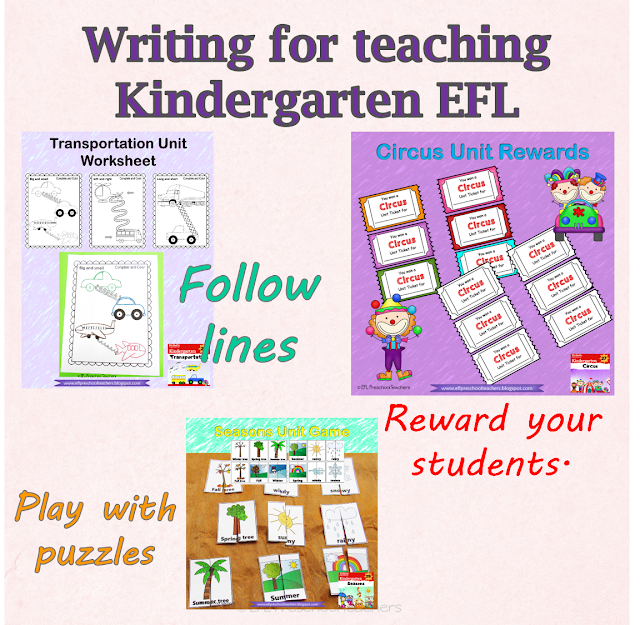Reading and researching a little on the topic, I noticed that I do include almost all that the kids needs to develop the pre-writing skill much needed in the future school years. Consider that each student have different needs that you might have to address.
I will go directly to the things that you can include in your lesson plan to reinforce the fine motor skills in your students.
1. Crafts! I know many teachers think it's a waste of time and a mess. I would do lots of crafts for the Holidays mainly. Students love it and cutting, pasting and manipulating the supplies is so good for them.
2. Cutouts. I include cutouts in all the resources. Here is an example of a sorting the cutouts into big and small. Students will use their fingers to manipulate the cutouts and put them in the corresponding bag.
3.Drawing. Students can draw on a blank paper the family, their pet, their favorite toys, anything that you are teaching. I have an example here of a worksheet that the students have to draw the hat of the community helper that they would like to be in the future.
4. Clothespin. Use the clothespin to play several games in class. The use of the fingers to grasp them is a great exercise.
5. Scissors and glue. Any worksheet or activity that includes cutting and gluing, that involves the scissors and sqeezing the glue.
6.Copying. Some students are at the copying words phase. Give them fun foam letters, dollar tree letters or magnetic letters so they can write words that you are teaching. I use the small cards from all the resources that I create.
7. Tracing. It is easy and fun for students to achieve it. After the tracing I love making puppets for other games in class.
8.Make books. The books that I have for each unit comes with a tracing sentences if your students are up for it, if not, it doesn't make a difference. But just making their own book, either a group book or an individual book, gives them a sense of value of writing.9. Throw the bean bag game. If you make a bean bag, use as often as you can to enhance the hand-eye coordination. Use it with flashcards,small cards, cutouts, anything.
10.Follow the lines. It can be a worksheet or lines on the floor made with chalk, masking tape.11. Puzzles. Students will have to use their hands to move the pieces. I include one or two on each unit. It is a game that students can play in small groups.
12. REWARD. Above all, reward your students. They are making an effort. There is a reward for each unit as well.
Hope these ideas are useful for you. Please Subscribe
to my newsletter with all the freebies of the week to teach Kindergarten
English Language Learners. You can download them now!
https://mailchi.mp/8a6a7df73d94/youll-love-these-resources












































